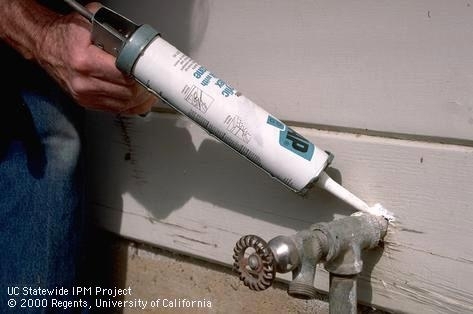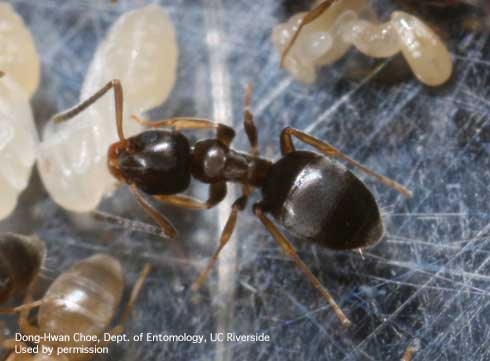- Author: Anne E Schellman
As weather cools, you may notice ants coming indoors. Large numbers of ants may invade your kitchen, bathroom, garage, bedrooms, or even your living room! Spraying the offending ants with a pesticide or household cleaner (not recommended) may kill the ants you see, but it won't stop more from invading.
Why do ants invade?
Ants are looking for food, water, and sometimes shelter. They live in colonies composed of worker ants and reproductive ants. The workers leave the nest to “scout” for resources. As they travel, they leave a scent trail for other ants to follow. Once food or water is found and that information is communicated to the colony, more ants arrive to help gather the resource.
Prevention
Your first step is to find out where the ants are coming from. Follow their trail until you find where they are entering. Then, use a caulking gun to seal up the cracks.

Sanitation
Is someone in your household inviting the ants? They may unknowingly do so by leaving sandwich crumbs or other foods on your kitchen counters. Pet food is also enticing to ants. Consider feeding your pets and then removing the food. Or, place your pet's food bowl in a larger bowl of water to create a “moat” that ants can't cross.
Management
Wipe up invading ants and their trails with soapy water. This destroys the scent trail left behind that helps attract more ants and kills the ants that are present.
If you've followed all the directions above but ants continue to invade, you may need to use bait to manage the infestation. Baits are a combination of insecticides mixed with a material to attract ants. When ants take the bait, they taste it and pass it along. The insecticide builds up in the system of the worker ants and the queen, eventually killing them. The bait is slow-acting, so it may take a while to see a reduction in ants. If you choose to use a bait, make sure to follow the directions on the label for best results.

For more information about ant management, visit the UC IPM website to read the Ants Quick Tips card from UC IPM. You can also call the Master Gardener helpline at 525-6802 or send us a message at ucmgstanislaus@ucanr.edu.
---
The University of California Cooperative Extension (UCCE) Stanislaus County Master Gardeners are available to answer questions on Wednesdays from 9:00 a.m.-12:00 p.m. Drop off a pest or gardening problem sample anytime during business hours to the Stanislaus Agricultural Center at 3800 Cornucopia Way Suite A in Modesto, 95358, and we will get back to you.

